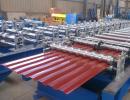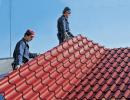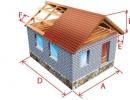All you need to know about the choice of vapor barrier for the cold and attic roof
When planning the project of your house, I always want it to be warm and cozy.
To do this, adhere to instructions when conducting construction work.
Also enough attention should be paid to, in particular, the literate provision of all types of isolation.
How to choose vapor insulation for the roof and not mistaken? To begin with, you will get acquainted with the types of vapor barrier materials.
In residential premises there are always water vapor, which circulates inside it. And according to the laws of physics, it rises with warm air. Over time, it will penetrate into the subcoase space, where it starting to absorb insulation.
With the onset of cold weather, all the moisture subjected to condensation forms an ice crust. And upon the occurrence of spring, all the ice melts, and the resulting moisture flips the inner filling of the roofing structure. This will lead to its destruction and loss of basic properties: with a slight moisture of the insulation, heat loss increases significantly.
To avoid these consequences, it is necessary which should be present in any roofing cake. Some believe that finishing the attic facing, which prevents moisture inhibition, eliminates negative consequences. But it is recommended to always use a special coating that is placed between the ceiling and insulation.
What vaporizoation to choose for roof?
There are the following types of steam barrier for the roof:
- painting;
- powered.
Color
Applies more often for high-altitude houses Soft roofs from rubberoid, iron roofing sheets, where the insulation is not used. This vapor barrier for a flat roof is well suited. The main complexity in the use of mixtures of this kind is the preparation of the surface before applying. For this type of isolation, such compositions are used. 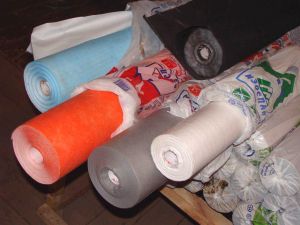 as:
as:
- hot bitumen;
- bitumen-crooksol mastic;
- chlorinet-based lacquer or polyvinyl chloride.
Outlet (membrane)
This type is more popular, especially in individual construction. Materials for this kind of isolation are produced in rolls and this gives some advantages:
- simplification of laying;
- ensuring a sealing compound when coaching;
- reducing the number of seams.
NOTE!
The inlet insulation is placed in one layer, if the room indoors below 75%, otherwise add another extra.
Types of inlet vapor insulation materials
- Waterproofing. Prevent steam penetration into insulation. Possess special perforationwhich allows pairs to penetrate out. Mounted with some roofing clearance that promotes air circulation Between the outer and underground space. It has unidirectional permeability of steam, preserves dry heat insulation. About waterproofing materials can be.
- Anti-condense. Equipped special farming layerwhich is on their inner surface. He delays moisture and excludes heat insulation. The moisture will quickly disperse due to the circulation of air in the gap. This type of insulation should be laid by the adsorbing layer for the inside of the room. Fastened with the help of a counterbalax.
- Playproof. Provide impermeable protection inner side of the roof insulation. Sometimes there are layers aluminum foilwhich is capable of reflecting back inside the radiant energy. Stacked with a ventilation gap to the insulation. Provides good protection against moisture, while maintaining heat.
- Membranes. Are modern vaporizolation materials that are able to prevent moisture output, passing air. When using membranes, the provision of air cleaver is often not necessary. This material for vaporizolation of the roof has gained more popular in our day.
Do you need steam barrier under a cold roof?
Special device such roofing does not require laying two layers: Heat insulation and vapor insulation. It saves funds and construction resources. Water vapor, which passes through the film, is between waterproofing and a professional flooring, from where it removes the flow of air.
Therefore, the main task when installing a cold roof is providing good ventilationwhich is ensured by creating a gap with the help of a counterbalax.
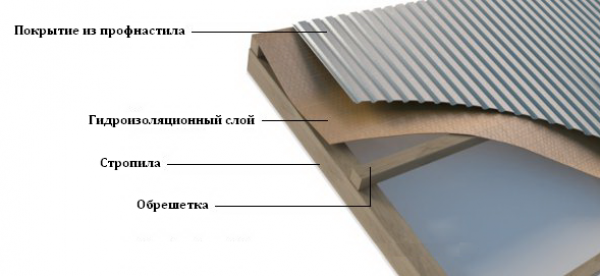
Cold roofing device
Do you need steam barrier under the cornet of a cold roof? No, not needed, the main thing is to take care of good ventilation.
Parosolation for the attic roof
 Materials are most often used as: pergamine, rubberoid and foil isolation. Also fairly effective are modern membraneswho have proven themselves in this sector and are excellent for vapor insulation of a soft roof.
Materials are most often used as: pergamine, rubberoid and foil isolation. Also fairly effective are modern membraneswho have proven themselves in this sector and are excellent for vapor insulation of a soft roof.
First of all, it is necessary to carry out sealing and isolation of various design elements. Vaporizolation is placed on and fixed by the method that corresponds to the surface material. You can read about the insulation of the attic roof.
Fixing to concrete, brick and metal surfaces are performed using double-sided adhesive tape, stacked with 10 cm overlap. And to the tree is attached to nails or stapler brackets.
CAUTION!
The vapor barrier film must be mounted without provis with a little tension.
Foil film is installed with a reflective layer inside the room so that the heat energy remains inside the building. There is a gap for ventilation between the thermal insulating and vaporizolation part, as well as to create a warm air barrier.

Detailed diagram of the roofing roof roofing
The joints of the film are sampled with a material with a close thermal expansion coefficient. Promotion of foil to the wall is better to press straps with a sealant applied to them.
Parosolation under professional flooring or metal tile
The metal tile is a heat-conducting coating, therefore, with the onset of cold weather, condensate causes it irreparable harm. To solve this problem, it is necessary to ensure the roof of competent vaporizolation and. Before choosing, it is necessary to decide what is more important: price or efficiency? Let's look at what vapor barrier is better for the roof of metal tile:
Cheap option - Parchment and polyethylene
Pergamine will be able to live for a long time, while he has sufficient flexibility and low cost. However, a large mass, an unpleasant smell when heated and difficulty is difficult to make it not the best option.
Polyethylene is well kept steam and protects the thermal insulation layer from moisture. It is cheap, but at the same time polyethylene is very easy to damage. It is difficult to mount independently. Due to the considerable mass, set the film with the standard method to professional flooring is hard. Therefore, the installation occurs to the inside of the cladding with a stapler. Film mounted in two layers.
Reinforced film, foil, membrane
Regarding the price is also an acceptable option. The reinforced film consists of several layers with a reinforcing mesh of a fabric that adds strength. Small weight and rigidity allow you to establish such insulation yourself. Fastened with self-adhesive tapes. A significant drawback is the absence of an anti-condensate layer, which can negatively affect the insulation.
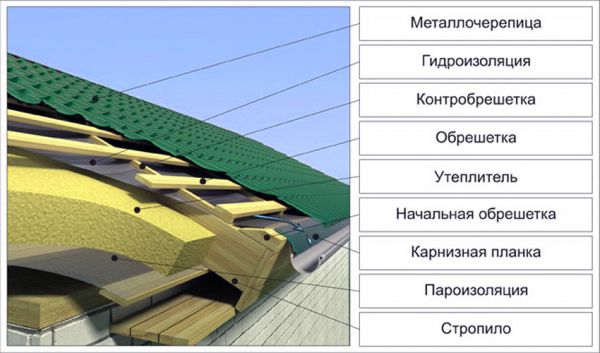
Diagram of the device of the roof from metal tile
What vaporizolation to choose for a roof under metal tile? One of the best options is foil. It has low thermal infliction, which allows you to maintain heat in a room, a small mass and sufficient strength. The larger minus of this material is a tendency to form corrosion.
Useful video
We invite you to familiarize yourself with the video about the properties of vaporizolation:
Conclusion
The penetrating ability of the steam is sometimes underestimated, which leads to a rapid failure of thermal insulation. Therefore, it is necessary to accommodately approach the issue of vaporizolation and take into account all the nuances when choosing materials and conducting work. This will provide a long service life of the future building.
In contact with


